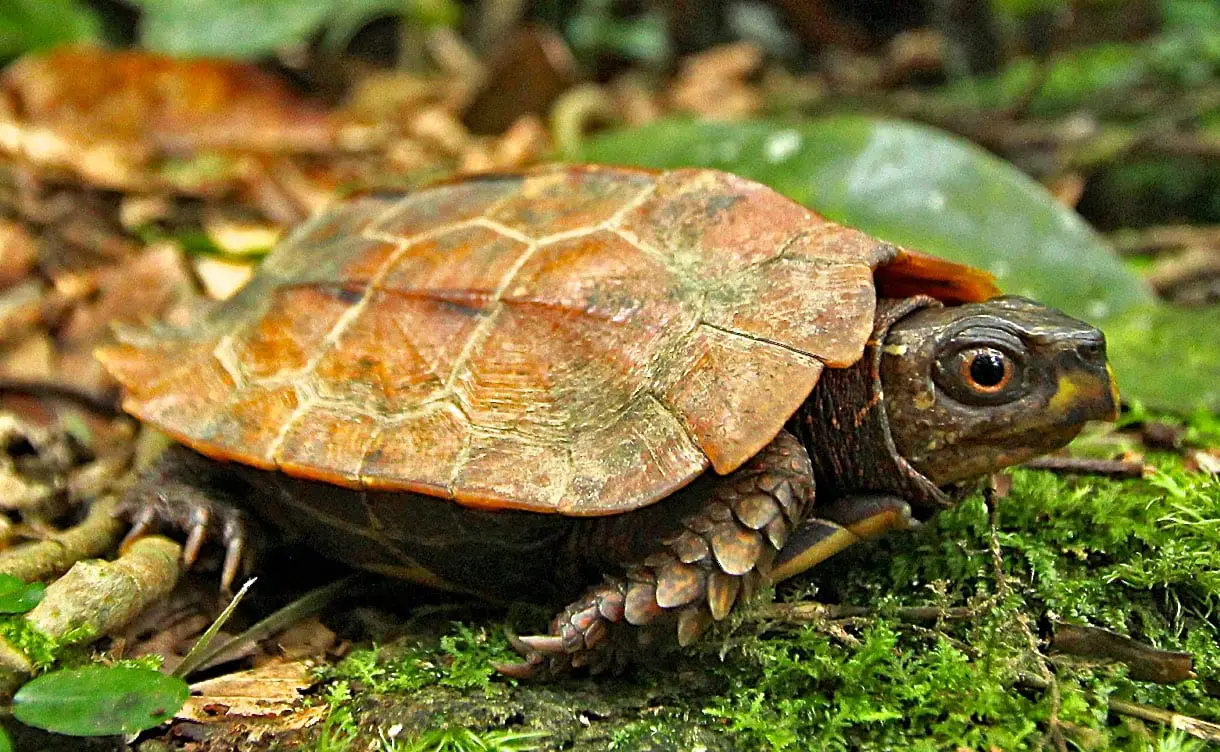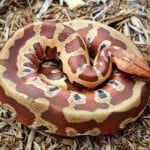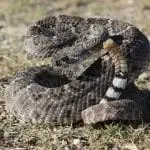Scientific Facts
| Common Name: | Vietnamese Black-Breasted Leaf Turtle, Black Breasted Leaf Turtle |
| Scientific Name: | Geoemyda Spengleri |
| Life Span: | Over 20 years |
| Length: | 4 inches (11 cm) |
| Clutch Size: | 1 to 3 eggs |
| Habitat: | Wooded, Wild Mountain Areas |
Physical Description
With just an average shell length of about 4 inches, there is no doubt that the Vietnamese Black-Breasted Leaf Turtle can be considered as among the smallest turtles discovered. Even though this species is native to the forests and jungles of Southeast Asia, they have already found their way home all over the world as pets.
As suggested by its name, the Vietnamese Black-Breasted Leaf Turtle has a shell with the appearance of a little brown leaf. They also have a dark-colored plastron. The colors of their shells range from yellow-brown to dark brown, all the way to gray-black hues. There are three notable ridges (keels) running down their shells, with the middle one similar to that of a leaf midrib.
Still, the most prominent feature of these turtles is their eyes. They have huge, striking eyes. The male turtles have white irises, while the females have light-brown iris. You can also tell the males from the females with their longer carapace, larger tail, and a more concave plastron.
Range and Distribution
The Vietnamese Black-Breasted Leaf Turtle is typically found in the Central and Northern parts of Vietnam, as well as in the Southern parts of China, especially in Guangxi, Guangdong, and Hainan Island. There have also been sightings in Laos and Borneo, though these reports are still unconfirmed.
This species is mainly terrestrial, which means that they spend most of their time hiding among leaf litters in the forest. They are seen rarely in water, as they prefer wooded, wild mountain areas, where they are usually found nearby wetlands and small creeks.
Behavior
Vietnamese Black-Breasted Leaf Turtles, just like many chelonians, do not usually move unless there is a particular reason for doing so. In fact, they will sit without any movement for several hours, with heads held high, and with their eyes wide open. However, they can easily be distracted by motion. In fact, they are observed to abandon their prey, even if it is already in their jaws just to pursue other turtles, which may be feeding simultaneously.
A recent study has shown that Vietnamese Black-Breasted Leaf Turtles have an impressive means of visual accommodation. Despite these turtles being at rest, surveying about their environment, their eyes independently move from one place to another. However, when prey is introduced within their area, these turtles fix both of their eyes on their target, keeping both eyes there even when the vision of an eye is obstructed.
This so-called coupled accommodation is observed only during binocular prey fixation. When this happens, the pupil of their eyes also responds quickly to any change in ambient light intensity.
Enclosure
Every owner needs to make a very important decision when it comes to caring for a Vietnamese Black-Breasted Leaf Turtle. For one, there is a need to decide whether the animals are to be kept separately, or in communal housing. This applies primarily to adult turtles.
There are advantages and disadvantages to each option. When they are housed separately, the enclosures can be small, which is good if you have limited space at home. These turtles are easy to care for, and maybe kept at room temperatures indoors.
Another advantage of this setup is that the female turtles can be given a break from the advances of male turtles. This will ensure that every animal is living and eating stress-free. It is also quite easier to track the parentage and overall health of the turtles when they are kept separately.
A recommended housing setup is an 18-gallon tub that measures around 25.5 inches x 17 inches x 15.5 inches. This provides an ideal home for a single turtle. Aside from being big enough, the opaque walls will also help in reducing stress since they usually shield the turtle from potential stress caused by seeing any movement or activity inside the room where they are kept in. The wall height also helps in maintaining high humidity, which is another important factor that needs to be considered when caring for Vietnamese Black-Breasted Leaf Turtles.
Keepers also have the option to house the adult turtles in a communal setting. However, there are also some important things that need to be remembered. For one, the subordinate animals need not be deprived of resources, including food, water, and hides. To make sure that care is properly implemented, provide as many resources according to the number of pets living in the group.
Enclosure Decors
Decors such as hides, rocks, logs, plants, as well as inclines in the substrate can also be added inside the enclosure. This greatly helps in making the turtles feel that they are safe. As much as humans think that they need other turtles to be happy, the presence of other turtles can also cause them stress. In a small turtle tub, up to 4 adult turtles can live together.
If you opt to prepare a setup for a group of turtles, you may also want to create a naturalistic enclosure, attempting to mimic the natural environment in the wild. A wide variety of live plants can also be used, which will certainly be appreciated by your turtles, as these additions can serve as shelter to them, helping to maintain high humidity in their tub.
You may also want to introduce some springtails or small pillbugs as they help in breaking down waste on their own. They can be purchased separately. Uneaten earthworms may also be introduced inside, and they are known to thrive for long periods of time.
Substrates
Vietnamese Black-Breasted Leaf Turtles love substrates that are mixed with peat moss, organic topsoil, and cypress mulch. The cypress mulch and topsoil help in retaining moisture, while also increasing overall humidity inside the terrarium. Peat moss, on the other hand, lowers pH, even helping in warding off mold, which usually grows in damp areas. You may also want to add some oak leaves to help in reducing stress since the turtles love hiding beneath them. Cork bark rounds and clay pot halves can also serve as hides.
Temperature and Humidity
The recommended temperature inside the turtles’ enclosure is at 68 to 85 degrees Fahrenheit. Note that when these turtles are exposed to temperatures in the lower 60s, they may greatly slow down. Some turtles have even been observed not moving for weeks. On the other hand, extreme fluctuations in the temperature, along with a healthy diet that is rich in fruit, also play a huge role in the production of healthy hatchlings.
Frequent misting of the turtle’s enclosure daily is recommended. Having a drainage layer will also help in making sure that the substrate remains moist, though not oversaturated. Basking heat sources are not really required to ensure proper humidity levels.
Feeding and Diet
In the wild, these turtles eat fruits, slugs, snails, earthworms, and insects. Among their favorites also include gastropods. In captivity, on the other hand, Vietnamese Black-Breasted Leaf Turtles can be fed with a mix of turtle pellets, live food, lean meat mixture, and fruits. Most often, live prey, including crickets, earthworms, slugs, snails, and pillbugs, are greatly appreciated.
Pellets may be offered in a dish combined with some chopped fruits. These turtles seem to love over-ripened fruits, especially those that are red in color. They also love berries. There may be some turtles in your group that are picky eaters. This means that you need to try and see which food is acceptable to them.
From time to time, they can also be fed crickets, bugs, earthworms, ground turkey, pinkie mice, and chicken. Since they generally prefer fruits over vegetables, they love watermelon, tomatoes, blueberries, bananas, and grapes.
Feeding hatchlings may be more difficult as they are pickier compared to adult turtles. They need a more protein-based diet. The younger turtles usually accept small insects and worms. Adults may be fed every other day, while the hatchlings need to be fed every day.
Incubation and Hatchling Care
Vietnamese Black-Breasted Leaf Turtles are straightforward, given that you have healthy adult turtles. When they are separately housed, the male turtles will run straight to the female turtles even just a few seconds after the introduction. Unlike other chelonian species, breeding is not as violent but can be ardent, just like other turtles.
These species do not lay many eggs, generally just one or two, as many as three eggs every year. Artificial incubation usually happens at least 70 days. The incubation process may be done even at fluctuating room temperatures. Exposing the eggs to cooler temperatures usually, extend the incubation period. Many expert keepers believe that actual fluctuations of temperatures during incubation helps in producing stronger and larger hatchlings.
Pathology
The primary pathology of Vietnamese Black-Breasted Leaf Turtles is entamoeba, which usually leads to secondary infections, and results in sepsis. This, in turn, leads to death. Once the health of your turtles starts to go downhill, they are almost impossible to recover and be treated. The good thing about these turtles is that they are so tough that they can still hold out for a period of time even when their internal organs have already succumbed to weakness and beyond repair. It is not uncommon to see necropsy reports showing classic sepsis lesions and loss of functional liver as a result of abscessation.
Shell lesions are also common among Vietnamese Black-Breasted Leaf Turtles. Many shell lesions are often the result of being kept at too high temperatures. Even though it may seem odd to keep a reptile at cooler temperatures, they usually thrive in a microhabitat with fluctuating temperatures.
It should also be noted that male turtles are generally weaker than females. Metronidazole is a very important aspect of any medical protocol with Vietnamese Black-Breasted Leaf Turtles. This is the reason why care is important, especially with shipping, as the turtles are usually mixed with other animals that may carry entamoeba. Note, however, that any administration of drugs needs to be under the supervision of a qualified veterinary expert.
Conservation and Threats
Vietnamese Black-Breasted Leaf Turtles are currently listed as endangered by IUCN. Therefore, it is very important to make sure that your source of these turtles for a pet is a reliable breeder. Because of their endangered status, they can be quite pricey to acquire.
This status is ironically a result of the pet trade that is associated with this species, most especially in the Guangxi, Guangdong, and Hainan provinces in China, where these Vietnamese Black-Breasted Leaf Turtles are gathered in huge numbers.
Where to Get Them
Vietnamese Black-Breasted Leaf Turtles are usually available from reputable pet shops or turtle breeders. They may be quite pricey due to their endangered status.
FAQ Section
What do Vietnamese Black-Breasted Leaf Turtles eat?
These turtles are omnivorous, eating small invertebrates such as earthworms and insects, and various fruits. They also seem to prefer slugs or snails.
How do Vietnamese Black-Breasted Leaf Turtles reproduce?
Vietnamese Black-Breasted Leaf Turtles are sexually dimorphic species. The clutch size is usually just one or two, while there can also be up to three clutches in a nesting season.
Are Vietnamese Black-Breasted Leaf Turtles considered as endangered species?
The Vietnamese Black-Breasted Leaf Turtles are listed under endangered species under the IUCN red list. When acquiring this species, make sure that they are from a reputable pet shop or breeder. Their status makes them pricey to acquire.
What are the predators of Vietnamese Black-Breasted Leaf Turtles?
Just like many other species of turtles, predation is typically limited to eggs and hatchlings. The primary threat to this species is humans who acquire them for the pet trade.
How long is the breeding period of Vietnamese Black-Breasted Leaf Turtles?
Even though little information is known about the mating behaviors of Vietnamese Black-Breasted Leaf Turtles in the wild, females usually lay a clutch of 1 to 2 eggs every 38-day interval within a nesting season. The incubation period is usually 66 to 73 days.



